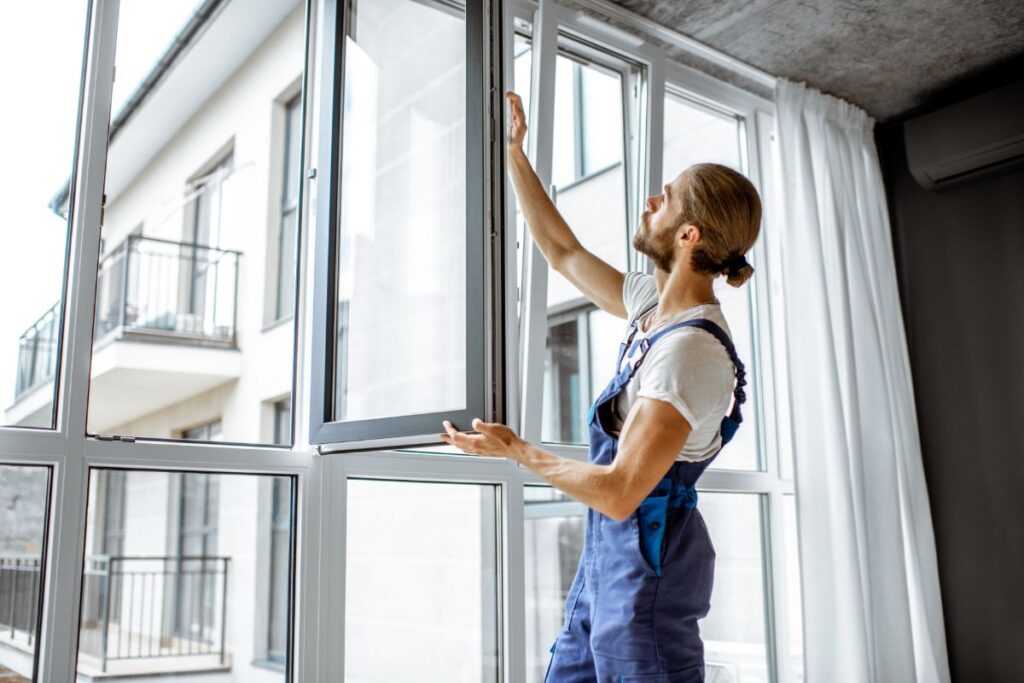In door and window installation engineering, the choice of left-hand or right-hand window hinges is often mistakenly regarded as a trivial detail. In reality, this seemingly small decision involves intricate spatial mechanics principles, directly affecting the longevity and safety of the door and window system.

1. The Structure of Left-Hand and Right-Hand Window Hinges
Modern window hinges are manufactured using precision stamping technology, and the difference between left-hand and right-hand window hinges lies in the core mechanical structure. The pivot design of the left-hand window hinge creates a clockwise torque when the window opens, while the right-hand window hinge generates a counterclockwise torque. According to the German DIN standard, the eccentricity of the window hinge pivot should be controlled within the range of 0.8-1.2mm. This micron-level precision ensures the stability of the window’s movement.
The blade angle design follows the golden ratio principle, with the left-hand window hinge having a blade angle of 97 degrees and the right-hand window hinge having a blade angle of 83 degrees. This differentiated angle design allows the window to achieve optimal mechanical support when opened, preventing stress concentration caused by angular deviations. Experiments have shown that correctly matched window hinges can increase load-bearing capacity by 40%.
In terms of material distribution, the reinforcing ribs of the left-hand window hinge are concentrated on the right base, while the right-hand window hinge is the opposite. This asymmetrical structural design allows the window hinge to more effectively disperse the weight of the window. Tests based on the British BS EN 1935 standard show that correctly selected window hinges can withstand over 200,000 fatigue cycles.
2. The Choice of Opening Direction in Spatial Mechanics
The geometric form of the building space determines the selection of the window hinge’s opening direction. In narrow corridors, the right-hand window hinge can achieve an ideal opening angle of 135 degrees, avoiding the window from colliding with the side wall. For L-shaped corner spaces, the left-hand window hinge, paired with a window stop device, can create the best passageway. Architects suggest that the window should maintain a 15cm gap from the adjacent wall when opened, which requires precise window hinge selection.
Human ergonomics also requires that the window opening direction aligns with human movement trajectories. Since 87% of people are right-handed, right-hand window hinges facilitate a natural push-motion when opening the window. Hospital room windows often use left-hand designs to allow medical staff to push the window with their left hand while operating medical equipment. The Japanese JIS A 5508 standard specifically stipulates the window hinge opening direction selection for public spaces.
The distribution of weight on the window is directly related to the window hinge’s opening direction. For solid wood windows, the center of gravity may need to be adjusted by selecting the appropriate window hinge opening direction. Windows heavier than 25kg are recommended to use triple window hinges combined with a reinforced opening direction design. The American ANSI/BHMA A156.1 standard specifies that heavy windows must use directional window hinges and label their load-bearing ratings.
3. Practical Rules for Window Hinge Selection
The “three-point positioning method” should be used to determine the opening direction on-site: standing on the opening side of the window, if the hinge axis is on the left side, it’s a left-hand window hinge; if it’s on the right, it’s a right-hand window hinge. Professional installation teams use a laser level to measure the verticality of the window frame; if the error exceeds 2mm, adjustable window hinges should be used. Yucheng Building Hardware recommends that high-rise buildings use directional window hinges with wind pressure resistance design.
Special scenarios require specialized solutions. Fire windows must use certified directional window hinges with a melting point of at least 800°C. Smart lock systems require that the window hinge opening direction match the movement direction of the lock tongue; errors exceeding 3 degrees can affect the lifespan of the electronic lock. In the restoration of ancient buildings, traditional forged window hinges must be customized according to the original opening direction.
The installation process directly affects the window hinge’s effectiveness. The depth of the embedded parts should reach two-thirds of the window frame thickness, and bolts should be tightened using a diagonal progressive method. Yucheng Building Hardware recommends checking window hinge gaps every quarter, and if wear exceeds 0.5mm, the window hinges should be replaced in time. High-end window hinges are equipped with wear indicator strips, and when the red marking is fully exposed, it signals the end of the replacement cycle.
In the field of architectural hardware, the choice of left-hand or right-hand window hinges is a precise science. From micro-structure to macro-space, from material mechanics to human ergonomics, every detail influences the quality and safety of the architectural space.
